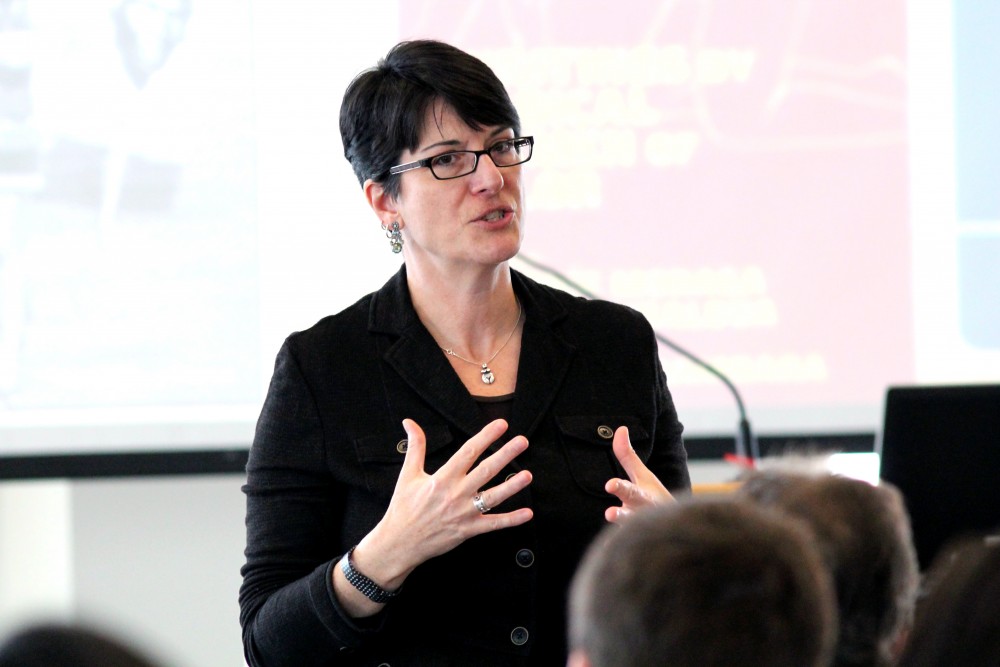Changing the look of feminism

GVL / Emily Frye Jo Reger
Mar 26, 2015
“Feminism is evolving and changing shape. Feminism is not dead – it is actually everywhere, it is just harder to see,” said Jo Reger in the Pere Marquette Room on Monday.
Reger, director of Oakland University’s women and gender studies program, spoke to Grand Valley State University students about her book, “Everywhere and Nowhere: Contemporary Feminism in the United States.”
“Feminism, I argue – in some ways in our society – is everywhere, and we don’t necessarily see it,” Reger said. “But at the same time, feminism is often portrayed in our society as nowhere.”
The idea of feminism kicking the bucket is not anything new. Reger said it happens every time there is a cultural change – after women achieved suffrage, many thought the feminist movement was finished.
However, Reger argues feminism is alive and well in society; it is just harder find it. She referenced Dove advertisements that focus on women’s natural beauty and Nike campaigns that embrace the female body.
“These are very feminist ideas that are so embedded in our culture that they just feel like positive messages of empowerment; they don’t feel like feminism,” Reger said.
The contradiction of feminism being everywhere and feminism being nowhere rises from two things: soft repression and a focus on national organized movement.
Soft repression has to deal with making a movement a joke. Reger said this kind of repression makes it so no one wants to admit they are a feminist.
A focus on national organized movements makes it harder for feminism to seem alive because it requires large action. If there is no march to The White House, there is no movement.
However, Reger was not satisfied with this basic contradiction of feminism. She wanted to understand why there is such a contrasting view – why it appears that feminism is both alive and dead at the same time.
Reger visited three communities: Wood View, Evers and Green City. She changed the names of the communities in order to protect the identities of its members.
While visiting these communities, she found feminism still existed. Yet, the type of feminism varied in each community.
“If they lived in a community where everyone was kind of open, their feminism looked a certain way,” Reger said. “But when I went to a community where people were not open, they were somewhat hostile to feminism – their feminism looked a different way.”
Wood View is an island of feminism, Reger said. This Midwestern community was hostile toward feminism, so the only feminists there were a small group of college students. The feminists were very traditional and had specific agenda.
On the East Coast, the Evers community was a feminist bubble. It was a progressive, all female college. There, feminism underlies all activism; it is a normal part of life, she said.
“At Wood View, women’s studies was radical, and that’s where they would come from,” Reger said. “At Evers, women’s studies was conservative, and no one would take women’s studies.”
Finally, Green City was a progressive metropolis. The Northwestern community was a home of multiple movements, and it linked feminism with the queer movement.
Reger said feminism is shaped by community environment. She said it is time to call off the autopsy – feminism does not look like it used to, but it is not dead.






















